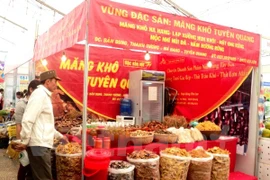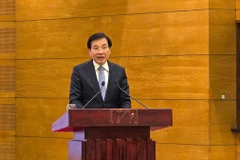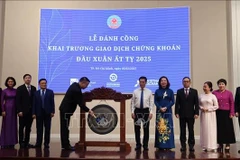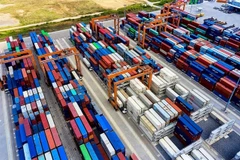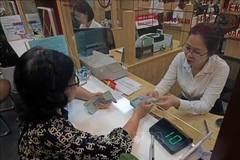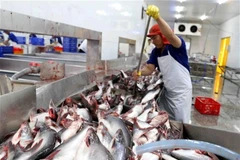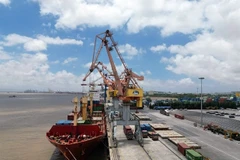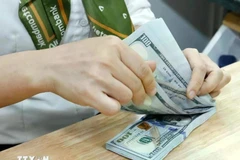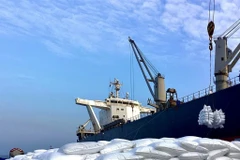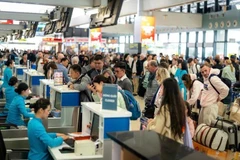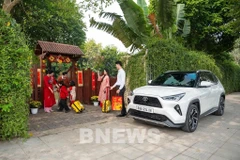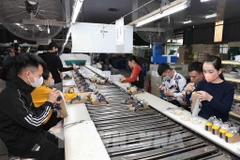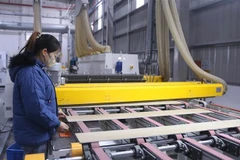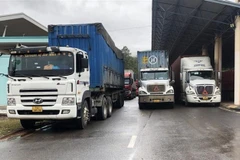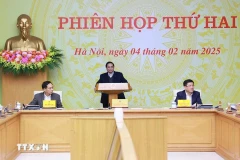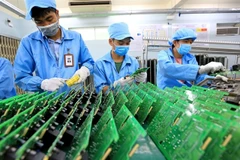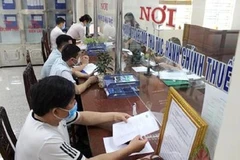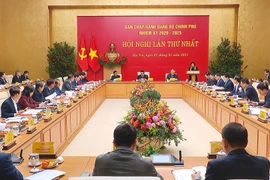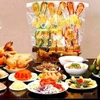Minister of Industry and Trade Vu Huy Hoang talks to Kinh Te Viet Nam va The Gioi (Vietnam Economy and World) about measures to help farmers resolve difficulties with consumption and production.
* Despite having bumper crops, famers receive little benefit due to rapidly decreasing market prices, and this has always been the situation. What do you think of this?
Although agriculture products contribute 18 percent of the country's GDP, they affect the lives of 70 percent of Vietnam's population, as well as the nation's social stability. Thus, the State always provides top priority to the agricultural sector, rural areas and farmers.
Problems caused by farmers with bumper crops seeing small profits due to falling prices has been a pressing issue for many years. Difficulties in consumption of a number of agricultural products, such as watermelon, purple shallot and sweet potatoes, have recently led to concerns over measures that ministries, sectors and localities have undertaken to rectify the situation.
Finding export markets for commodities with large volumes and stable sources is one of the chief tasks that the government assigned to the Ministry of Industry and Trade (MoIT), so we focus on the country's main export items, such as rice, coffee, rubber and seafood.
These commodities have stable outputs and are being carried out in line with the agricultural sector's plans to help agencies forecast their output and find consumer markets. For example, every year Vietnam exports between 6 and 7 million tonnes of rice, so farmers find it convenient when looking for export markets.
For other products, especially short-term crops such as watermelon, which is harvested after only two months of growth, it's really difficult to predict the output and find markets, because they were not cultivated in concentrated areas and the State has no development plan for them.
* Can you explain why there have been positive signs about export markets for lychees and dragon fruits, while other commodities can't enjoy the same advantages?
Regarding watermelons, lorries carrying watermelon form a long queue on the northern Vietnamese border, as waiting for transport to Chinese markets has been slow many years. The fruit sometimes rots while waiting, harming Vietnamese merchants and farmers.
Watermelon is grown in many areas in Vietnam, but most are exported to China through the Tan Thanh border gate in Lang Son province.
Due to the nature of this kind of fruit, huge volumes of watermelon from central and southern provinces are transported to the Tan Thanh border gate in a short period of time. With its existing infrastructure in the area, local customs officials can only provide clearance for 350 vehicles. However, during the peak of watermelon harvesting, up to 1,000 trucks carrying watermelon pass through the gate, leading to a temporary traffic jam at the border areas.
In the past few years, the Ministry of Industry and Trade and the Ministry of Agriculture and Rural Development have coordinated with Lang Son province to develop proposals to the government on developing an entrepot project, to reduce the congestion of export farm produce at border gates.
The site will include a warehouse system, container truck station which can handle over 1,000 trucks, and a storage yard.
After the build-up of export farm produce earlier this year, the MoIT has suggested that Lang Son province work to build the facilities, and preparation is underway. Because the project requires large investments, the ministry will propose that the government provide assistance for the project.
Regarding lychee, unlike watermelon and purple shallot, they are mostly grown in the provinces of Hai Duong, Bac Giang, and some provinces in the Mekong River Delta. This kind of fruit has a stable output and is planted in concentrated areas and on a large scale. Thus, it's convenient for enterprises to purchase and for export.
Dragon fruits enjoy the same situation as lychees.
* Besides guiding farmers to plant farm produce to meet the market demand, what are long-term solutions that the Ministry of Industry and Trade has mapped out to solve the problems?
We can't blame farmers for planting farm produce to earn an immediate profit. Yet, it is natural if the market demands and price decreases occur when there is an oversupply of a product in the market at the same time. We should advise farmers to be wise in deciding which kind of products they can grow and they should work together to meet the demands of consumers.
For the domestic market, we will focus on developing goods distribution channels, such as modern, as well as and traditional channels.
In spite of accounting for just around 20 percent of total agricultural product consumption, modern distribution channels have the potential to develop in the future. The MoIT instructs enterprises which purchase agricultural products to sign long-term contracts with retail distribution enterprises on the supplying of products with high quality, reasonable prices, ensuring that products are safe and have clearly identified origins.
Because between 50 and 70 percent of the total domestic agricultural products consumption is performed through traditional distribution channels, the MoIT directs enterprises to transport goods to transit points near consumer markets by investing in transit warehouses in large cities and providing support to delivery services in the channel.
Regarding the searching for export markets, MoIT will rely on trade promotion information channels to look for market information and find potential markets.
The ministry also suggests enterprises improve the quality of their products to expand exports to new and demanding markets, as well as invest in modern processing and preserving technologies to increase the value of export products, while meeting the requirements of large export markets.-VNA


